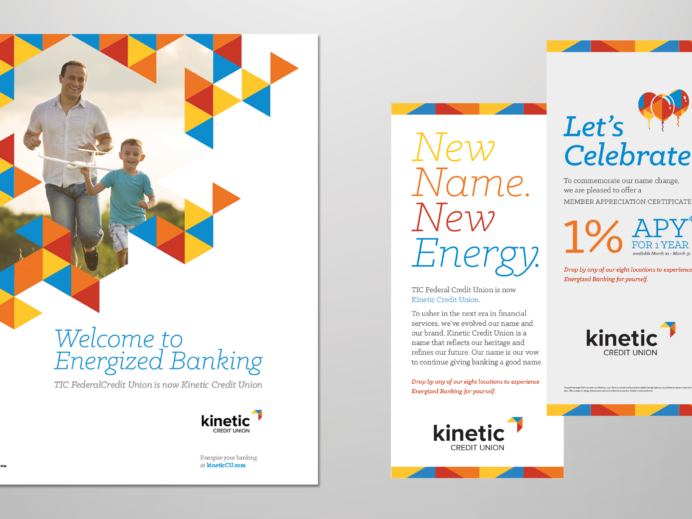Brands and the Modern Path to Purchase
This is our second installment of The Art and Science of Reaching Consumers, a deeper look at topics we discussed in our recent appearance on Worldwide Business with kathy ireland®. In last week’s article, we discussed overarching themes that are important in order to really connect and engage with consumers, and brands that are good examples of that type of relationship-building. This week, we are going to look at the path to purchase model and how technology has exploded the channels, but not the opportunities, available to brands.
Explosion of Communication Channels
It’s no secret that technology has offered consumers many ways to communicate and engage with each other as never before. We watch TV on our smart phones; we communicate over social more frequently than face-to-face; and we virtually have the entire world at our fingertips. Despite all of these advances in communication technology, brands have been having a more and more difficult time reaching consumers in a meaningful way. With so many methods to communicate, why aren’t brands breaking through?
The bounty of information available to consumers means that brand messages can get lost, especially if consumers are actively avoiding brand communications. Today, consumers really can pick and choose what we want to engage with, and many are choosing to mute or fast-forward through brand messages. Rather than determining what consumers really want, many brands have responded to this competition with sheer volume, cranking out more and more consumer messages. In fact, Yankelovich Research reports that consumers come in contact with 2,000 to 3,000 brand and marketing messages a day.
A Modern Path to Purchase
If volume isn’t the answer for brands, then what is? This challenging communication landscape now demands a new approach to consumer communication. In days past, consumers followed a relatively straightforward “path to purchase.” This accepted model included Awareness: knowing something exists; Consideration: weighing their options; Purchase: buying a product; and Loyalty: liking what they bought and coming back again. Companies built a good product, raised a flag about it, convinced consumers to give it a try, and expected them to return; because the quality was good. This was a commodity-based model that worked well for brands for decades.
Today it’s not nearly as straightforward and formulaic to reach the consumer and have them know about, use and like a product, and even if they do, that’s often not enough. The fact is that today’s consumers experience brands everywhere in their daily lives, actually making it harder for brands to cut through the communication clutter. And while brands battle with each other over features, the consumer developed their own path-to-purchase and remade the rules to the game.
The Four A’s
A modern-era path to purchase also begins with Awareness but today, that means developing messages that are persona and channel appropriate. So while it’s important to tailor messages for channels – how you communicate as a brand on social media is much different than how you communicate on your website, for instance – it’s also important for all of these communications to tie back to an overarching brand identity. That identity has to be authentic and have a personality, almost as a person would. The development of authentic voice ties back to Sean’s point last week about brands finding their meaning through asking themselves what they stand for and the “why” behind their brand.
The second step in the modernized path to purchase is new. Activation is everywhere consumers interact with a brand. This includes in person, social media, at events, in gaming, in the community, all interactions where consumers engage with a brand. This is where consumers not only buy a product, but believe in the brand. Using a product is only one level of contact, but experience with a brand means more than direct consumer-product interaction. This type of engagement includes a consumer’s experience with brand identity, which is why we spend so much time with our clients developing their meaningful and memorable selves.
What is it that helps consumers make the leap between using a product to loving a product? Adoption is where consumers take their interaction with a brand and make it mean more. This step translates into consumers coming to believe in a brand and what it stands for. This is again another reason why the best brands have pondered the “why” of their existence and behave in relation to that identity. That doesn’t mean a structured definition of what is on and off-brand for the way to interact. Quite the contrary, embracing a brand identity actually allows the people who make up a brand to interact as real people. Too much structure, and consumers will sniff out the “corporate speak” and turn off.
Finally, the cherry on the sundae is brand love. Advocacy is where consumers not only embrace brands for themselves and endorse the brand for others to try. Advocacy is loyalty cranked up to 100. Yes, consumers will return to this brand because of its intrinsic value, but they go further, and recommend to a friend, and sometimes even to a stranger. The reason people become brand advocates goes well-beyond a good product; it’s because they believe in what the brand stands for, a brand’s big idea, and they’ve adopted it as their own.
While we’ve addressed how brands can build themselves and communicate their brand values, it’s important to understand one element of the engagement piece that is key to a brand’s success. Today’s brands are co-created by consumers. That means that it’s not just what a brand wants to say that matters; in fact, that matters less and less in today’s competitive environment. The most critical consideration is what consumers want to hear from brands. The best way to find out? Listen.
Be sure to stay tuned for our last installment, when we discuss the difference between commodity brands and premium brands.






